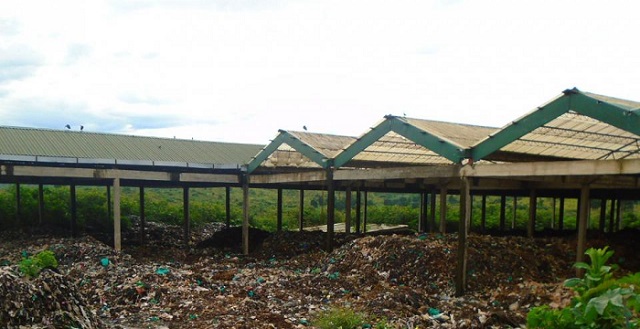
Hoima, Uganda | THE INDEPENDENT | Hoima city authorities have failed to revamp the 2.5 Billion Shillings garbage recycling plant due to financial constraints.
In September, the city authorities noted that they had earmarked 700 million shillings to restore the plant, but to date, nothing has been done even as garbage piles up in the city.
The plant was constructed in 2012, with funding from the World Bank and National Environment Management Authority-NEMA. The facility which sits on three acres of land has a capacity of processing 70 tons of garbage daily.
Currently, the plant lacks electricity and running water which are the two catalysts for its operations.
Brian Kaboyo, the Hoima City Mayor says that the city has no money to revamp the garbage plant. He says that they are lobbying from various organizations to help come to their rescue and have the facility revamped.
Kaboyo has tasked the Hoima city residents to develop effective garbage disposal guidelines as the city authorities solicit funds to have the garbage plant revamped.
The residents neighboring the garbage recycling plant have several times raised concerns about contracting diseases.
David Kunihira, a resident of Hoima city wonders why for 8 years, the city authorities have failed to revamp the facility. He says that they should expedite the renovation of the recycling plant.
Hoima East Division, which comprises the central business area, is the biggest generator of solid waste in Hoima city. Some of the key waste generators include the abattoir, the central market, restaurants, hotels, schools, factories, and other processing units in Kiryatete industrial area.
According to statistics obtained from the city authorities, the solid waste generation rate was 150 to 200 tons per day in 2016.
A total of 34.6 percent of the waste generated at the household level was food waste, about 26.8 percent was plastic, paper and cardboard made up about 23.9 percent while the proportion of textiles in the waste was estimated at 7.8 percent.
****
URN
 The Independent Uganda: You get the Truth we Pay the Price
The Independent Uganda: You get the Truth we Pay the Price


